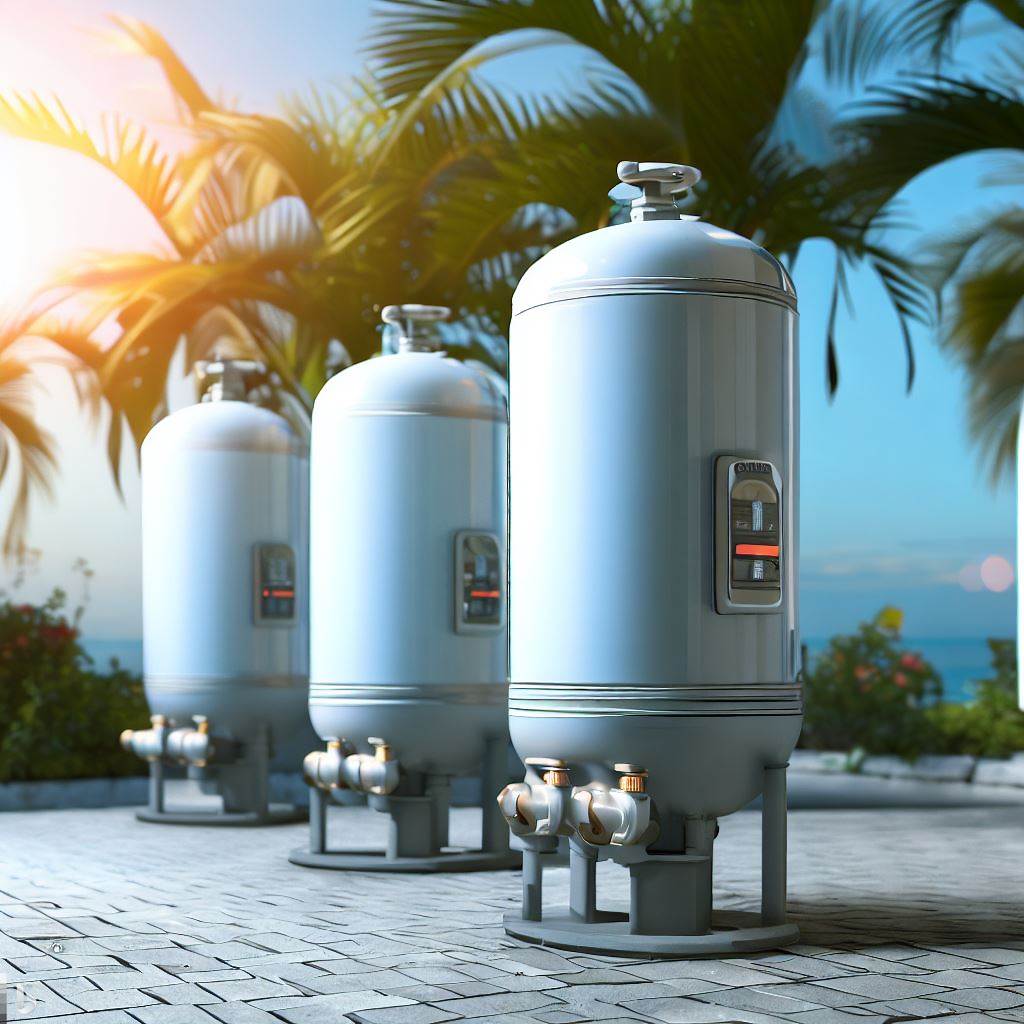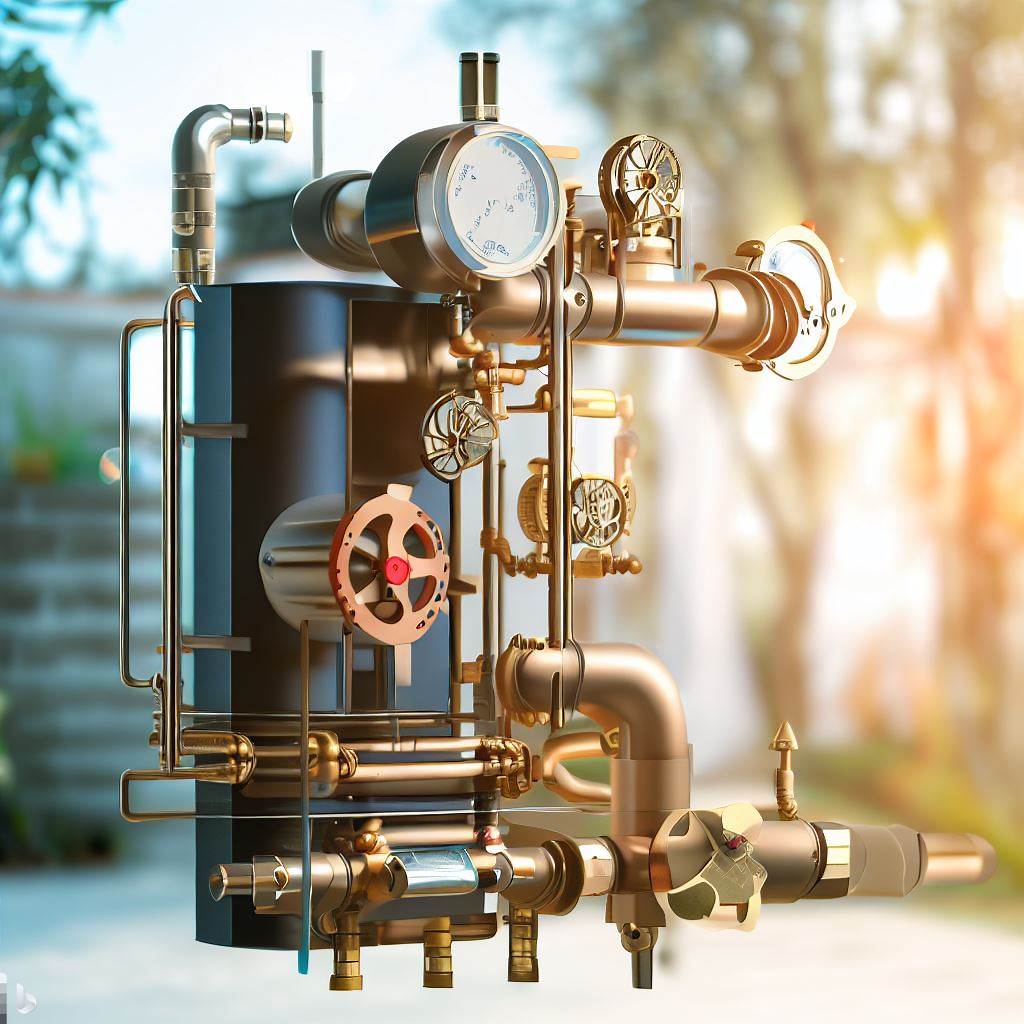Table of Contents
The function of a water heater is not simple. There are various types for different heating needs, like solar, tankless, and electric. Each works in its own way to get hot water quickly. An energy source – gas, electricity, or even solar – heats the cold water.
Heaters have essential parts like a thermostat, shutoff valve, and anode to stop corrosion. Some have heat exchangers or burners too. For best results, insulate tanks, flush sediment, set the right temp, and get annual maintenance. By following these tips and knowing how your heater works, you’ll have hot water and save energy! So, why not ask your water heater for a hot date? It’s the master of setting the perfect temperature!
Key Takeaways
- A water heater is an essential appliance that provides hot water for various household activities such as bathing, washing dishes, and doing laundry.
- The primary function of a water heater is to heat cold water and store it in a tank until it is needed.
- Water heaters can be powered by electricity, gas, or solar energy, each having its advantages and disadvantages.
- The heating element in a water heater is responsible for heating the water to the desired temperature.
- The thermostat in a water heater helps regulate the temperature and prevent overheating.
- Regular maintenance of a water heater is crucial to ensure its optimal performance and longevity.
- Sediment buildup in the tank can affect the efficiency of a water heater and should be periodically flushed out.
- Insulating the water heater and its pipes can help reduce heat loss and save energy.
- It is important to consider the size and capacity of a water heater based on the household’s hot water needs.
- Understanding the function of a water heater can help troubleshoot common issues and make informed decisions when purchasing or maintaining one.
The function of a water heater
Make a splash with water heaters! Get hot water for bathing, cooking and cleaning from various types – solar, electric, gas and tankless.
Solar water heaters use the sun’s energy to warm up water in a storage tank. Electric ones use heating elements, gas units use a burner, and tankless heaters warm water as it passes through a heating unit.
Electric water heaters have an electric heating element – electricity makes it heat up. Gas water heaters have a pilot light that ignites the gas burner. Tankless units don’t store hot water – they heat it instantly!
Different types of water heaters

Water heaters come in many types, each with its own special features and functions. Let’s take a look!
Solar water heaters use solar energy to heat the water, reducing reliance on traditional energy sources.
Electric water heaters have a heating element to supply hot water constantly.
Tankless water heaters provide hot water on demand, without a storage tank.
Gas water heaters burn natural gas or propane to heat the water.
Other options include jacket water heaters, heat pump water heaters, and instant water heaters.
Jacket heaters have an outer covering for insulation, heat pump water heaters extract heat from the air or ground, and instant water heaters quickly heat water as it passes through.
How water heaters work?

Water heaters provide hot water for homes and other buildings. There are many kinds, like solar, electric, gas, and tankless ones. Solar ones use the sun’s energy to heat the water. Electric ones have submergible heating elements powered by electricity. Gas ones have a burner that is fueled by natural gas or propane.
Tankless water heaters don’t have storage tanks and heat water only when needed. To save energy, insulation jackets can be added to storage tank-type water heaters. So, water heaters make sure you never have to take a cold shower again!
Common components of water heaters

Water heaters have components that work together for hot water. These components include:
- Heating Element: Generate heat for water
- Thermostat: Regulate the temperature
- Tank: Store and hold heated water
- Dip Tube: Distribute cold water to the bottom of the tank
- Relief Valve: Release excess pressure
- Drain Valve: Allow for draining and maintenance
The heating element is usually metal and can be powered by electricity or gas. The thermostat keeps the set temperature for hot water. For these components to work effectively, regular maintenance is important.
Flush out sediments through the drain valve yearly. Inspect valves and fittings to make sure they are functioning. Adjust thermostat to an appropriate temperature. Lastly, hire a professional plumber for yearly inspections and servicing.
Energy efficiency and features of water heaters
Water heaters offer us the luxury of hot water for various purposes. Different types and models are available, with their own unique energy efficiency and features. These determine their effectiveness in heating water while minimizing energy consumption.
- Energy Efficiency: Ratings such as the Energy Factor (EF) for electric water heaters, or the Uniform Energy Factor (UEF) for gas and tankless units, indicate energy efficiency. Higher ratings mean more energy is converted into usable heat.
- Features to Conserve Energy: Modern water heaters may have adjustable thermostats, advanced heat exchangers, insulation materials, and more, to help conserve energy.
- Eco-Friendly Options: Solar water heaters and heat pump water heaters are eco-friendly and energy-efficient alternatives to traditional electric or gas-powered models.
- Safety Features: Pressure relief valves and shutoff valves are safety features that protect against accidents and potential damage.
Certain water heaters offer unique details. For example, tankless water heaters only heat water on demand, eliminating standby heat loss. Storage water heaters store a certain amount of hot water, ensuring immediate access to hot water during peak usage times.
The United States Department of Energy states that 18% of our home’s total energy usage is used to heat water. Thus, an energy-efficient water heater can reduce energy bills and emissions. Installing and maintaining water heaters needs more care than waiting for hot water to boil on a broken stove.
Installation and maintenance of water heaters
When it comes to water heaters, there are 3 key steps you need to know! Here’s a guide:
- Installation:
- Pick the best spot for the water heater.
- Connect the cold water supply line to the inlet valve.
- Connect the hot water discharge pipe to the outlet valve. Secure it.
- Maintenance:
- Check the temperature and pressure relief valve regularly.
- Replace the sacrificial anode rod when needed. This prevents corrosion in the tank.
- Flush the tank yearly to get rid of sediment. This improves efficiency.
- Safety:
- Turn off any power or gas before maintenance.
- Be careful when draining hot water. It causes burns.
- If unsure, get help from a professional plumber.
Plus, some water heaters, such as solar or tankless types, need specific installation and maintenance procedures. Refer to the manufacturer’s guidelines.
Frequently Asked Questions
How does a water heater function?
A water heater heats the water using various mechanisms such as gas burners, electric heating elements, heat pumps, or solar collectors. The heated water is stored in a tank or delivered instantly without storage depending on the type of water heater.
How does a solar water heater function?
A solar water heater uses solar collectors to absorb sunlight and heat the water. The heated water is then either stored in a tank or circulated directly into the plumbing system for immediate use.
How does an electric water heater function?
An electric water heater consists of one or more heating elements that heat the water when electricity passes through them. The heated water is stored in a tank for later use.
How does a tankless water heater function?
Tankless water heaters heat the water on demand as it flows through a heat exchanger. There is no storage tank involved, and the water is heated instantly as it passes through the unit.
How does a gas water heater function?
A gas water heater has a gas burner at the bottom of the tank that ignites when the thermostat senses the need for hot water. The combustion heats the water, which is then stored in the tank for use.
How does a heat pump water heater function?
A heat pump water heater extracts heat from the surrounding air and transfers it into the water, using a compressor and a refrigerant. This process is more energy-efficient compared to other types of water heaters.
Conclusion
Water heaters provide hot water for residential and commercial buildings. They can be powered by gas, electricity, or solar energy.
Solar water heaters use sunlight to heat the stored water. Electric water heaters use heating elements to warm the tank. Tankless water heaters heat up the water as it flows through them. Gas water heaters use a burner to heat the tank. Heat pumps extract heat from the air or ground and transfer it to the water.
References :
